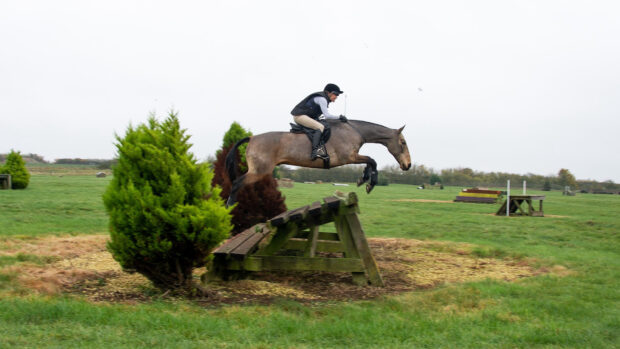Having a horse that’s difficult to load can scupper your plans for competing — and leave you feeling stressed and frustrated before you’ve even arrived at the event.
Horse & Hound visited natural horsemanship expert Gary Witheford at his Wiltshire base, to learn his techniques for loading a young or nervous horse.
Gary Witheford: teaching a horse to load
Tappers
Gary uses ‘tappers’ to help with loading. The light and narrow three-foot-long modified lunge whip is ued to ‘tap’ the horse on either side of the hindquarters, to encourage it forward into the horsebox. By standing either side, it can lessen the danger of being kicked, and help keep the hindquarters straight.
Loading the horse
Gary stands on the ramp so that the horse is a good distance away — 1.5m — and as he moves back the horse follows, responding to the pressure and release technique that Gary uses with his halter.
The ‘Double Diamond’ brand that Gary uses is a nylon rope halter with knotted pressure points on the top of the head, under the chin and under the throat: while you don’t pull at a horse, if it backs off and pulls at you, the knots tighten.
But as the knots are half-hitchers, if the horse stops pulling back, it eases off — providing pressure when needed and release when the horse comes forward.
Unloading the horse
“Coming back down the ramp, the worst thing you can do is put a horse to the side of you,” says Gary. “Everyone’s taught to lead the horse down the ramp, but that’s giving them an opportunity to jump off. I always stand in front of the horse, and then I turn him and stand in the middle of the ramp and look straight at him. I don’t let him go by me — my body language and eye contact stops him.”

Gary Witheford: how to deal with a problem horse [VIDEO]
H&H visited Gary Witheford at his Wiltshire-base to find out what the first steps are that he takes when dealing
Keen to find out more about Gary’s work? If Horses Could Talk by Gary Witheford with Brough Scott is now available at Racing Post books, priced at £20. Visit shop1.racingpost.com
Horse & Hound advises you to wear appropriate safety wear when loading




